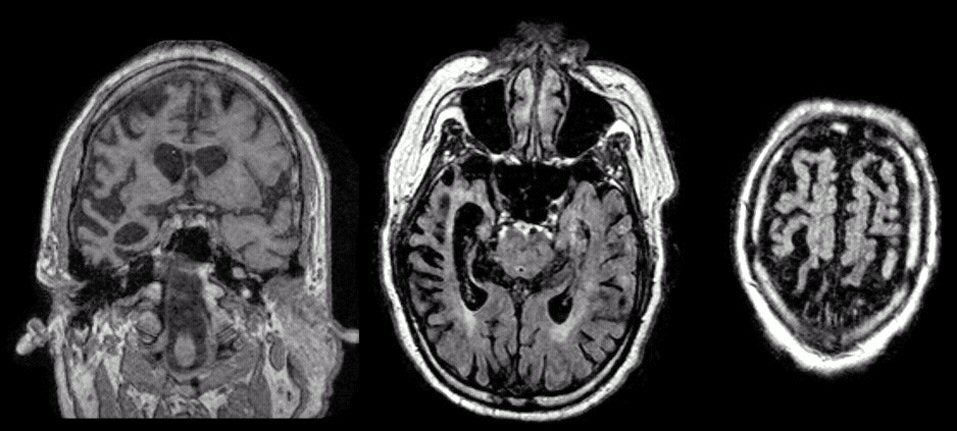
| A 75 year-old man developed a slowly progressive cognitive decline with impairment of judgment and executive functions. In addition, there was a marked change in personality. He displayed a lack of concern about the deterioration of his personal hygiene. |

![]()
![]()
![]()
![]()
| Frontotemporal Dementia (FTD): Flair MRI images - (Left)
Coronal; (Middle) Axial - midbrain level; (Right) Axial - vertex
level. Note the severe parenchymal volume loss, which is most marked
in the frontal and anterior temporal areas. FTD is one of the focal cortical degenerations. The nomenclature of the focal cortical degenerations is complex. FTD likely includes subgroups of patients with Pick's Disease and Primary Progressive Aphasia (PPA). Patients with FTD often display behavioral abnormalities referable to frontal lobe dysfunction (disinhibition, impulsivity, motor impersistence, apathy, poor social skills). For the subgroup with PPA, initial symptoms consist of language dysfunction, especially word finding difficulty. The course, similar to Alzheimer's Disease (AD), is progressive. A subgroup of patients develop a co-existent motor neuron disorder, similar to amyotrophic lateral sclerosis (ALS). The pathophysiology of FTD involves neuronal loss with spongiform changes and gliosis. Some cases are familial, the pathophysiology of which involves abnormal tau proteins (i.e., tauopathy). |
Revised
11/23/06
Copyrighted 2006. David C Preston